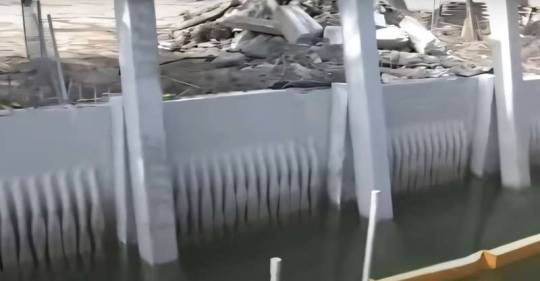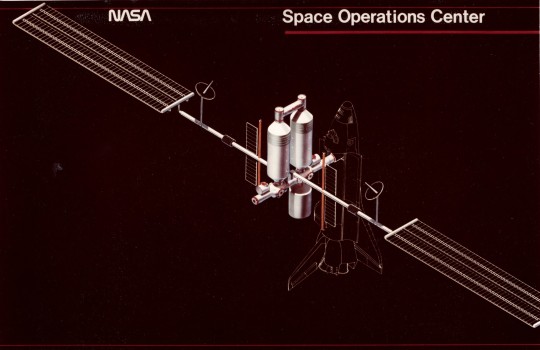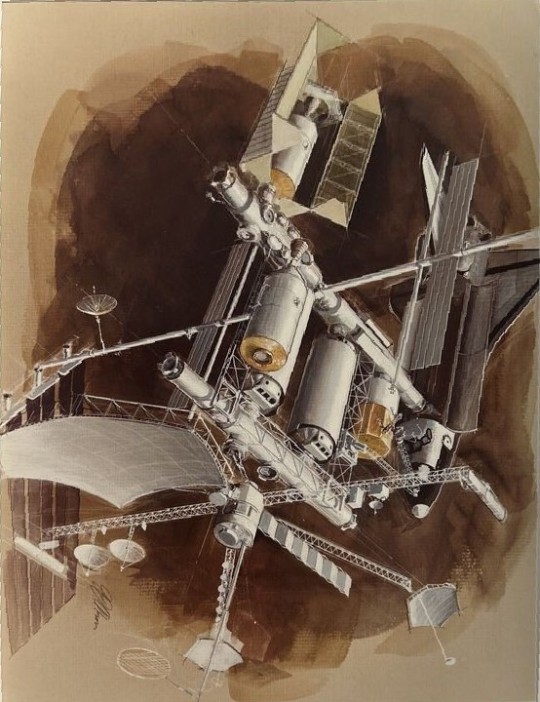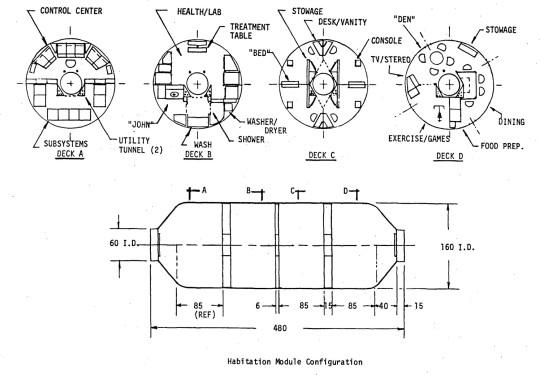#solar data monitoring
Explore tagged Tumblr posts
Text
Maximize Your Solar Power with Smart Solar Analytics
The world is moving toward clean energy, and solar power is leading the way. But installing solar panels is just the first step—how do you ensure you're getting the most out of them? That’s where solar analytics services come in.
What is Solar Analytics & Why Does It Matter?
Think of solar energy analytics as your system’s personal health tracker. It collects data, analyzes trends, and helps you understand how well your panels are performing. With solar data analytics, you can spot inefficiencies, fix issues before they become costly, and even predict future energy output based on weather patterns.
How Solar Data Analytics Can Save You Money
Track Performance in Real-Time – Know how much energy your panels produce and detect any drops in efficiency.
Prevent Unexpected Breakdowns – Predictive maintenance helps you fix small issues before they turn into big problems.
Optimize Energy Usage – Use data analytics for solar energy to store or redistribute power for maximum efficiency.
Reduce Costs & Boost ROI – Less energy waste means lower bills and a faster return on your investment.
Why You Need Solar Analytics Services
Whether you're a homeowner, a business, or a solar farm operator, data-driven decisions can help you maximize your solar power potential. With advanced solar analytics, you’re not just generating energy—you’re making it work smarter for you.
Why Choose Dataplatr for Solar Analytics?
At Dataplatr, we specialize in solar data analytics solutions that help businesses optimize solar energy usage with precision. Our advanced data-driven approach enables real-time monitoring, predictive maintenance, and intelligent energy forecasting—ensuring you get the highest efficiency from your solar investment.
Ready to make your solar energy smarter? Dataplatr is here to help you harness the power of solar analytics services for maximum results. Contact us today!
0 notes
Text
soooo excited for the solar company to Finally come today & figure out what is wrong w/ our solar panels
#keeping it fun and funky fresh#personal#looking at the data from previous years they should be almost entirely covering our electric bill#and they're not#not even close#they're operating at like 1/6 that capacity. sooooooooo we are paying a Lot more for electricity than we should be#to the point that the power company (who does net metering) emailed us and was like ''hey... what is going on...''#(the solar company does Not monitor the panels it installs & takes its SWEET FUCKING TIME getting back to you)#(it's been like two months)#our house in the middle of our street
5 notes
·
View notes
Text
https://greatpelican.in/solutions/solar
#Empowering Solar Installers and Users with Smart Solar Monitoring Solutions#Monitor Your Solar Sites with Ease#Boost Efficiency and Maximize ROI#Real Time Insights and Performance Data#Take Control of Your Solar Energy Production Today!
0 notes
Link

What Is Credit Monitoring Arrangement (CMA) And How to Prepare CMA Data
What Is CMA Data?
Credit Monitoring Data is the financial report of the business that gives complete information about the leading institution about their past performance and an analysis of their future growth. what is credit monitoring arrangement (cma) and how to prepare cma data report has been in operation since 1988 and is the key to control credit. The Reserve Bank of India has mandated all banks to prepare CMA data before lending loans to large borrowers. CMA data is required for all types of loans i.e., project loans, term loans, and for all types of finances.
If the CMA report is not properly made, then the maximum chances are that your CMA report may get rejected. Let's talk about the necessary documents required to prepare a credit monitoring arrangement report so that your bank loan can’t be rejected.
Documents To Be Present at Hand to Prepare CMA Data
- Income tax return and complete information about the owner
- financial statement of last two years audit report
- provisional financial statement of the year in which CMA data is prepared
- cost sheet of direct and indirect expanses
- comparative financial statements of 5 years
- fund flow statements
Things To Keep in Mind While Preparing CMA Data
- restrain yourself from providing any false information
- all assumptions should be reasonable
- company must have all valid proofs of business growth
- attach the profit and loss account and balance sheet
- all provisions should be made about future profit and loss
- CMA report should be based on facts and the actual business
By providing a CMA report your chances of getting a loan approved will increase. The bank will verify all the facts and your loan should be provided according to that only.
If you are interested in saving your time and increasing your chances of getting a loan approved contact us. Get your CMA report by using our online service.
#what is credit monitoring arrangement (cma data) and how to prepare cma data report#credit monitoring arrangement report#credit report#project report#power project#solar power project loan#hydro power project loan#business loan#financeseva
1 note
·
View note
Text
Dandelion News - January 15-21
Like these weekly compilations? Tip me at $kaybarr1735 or check out my Dandelion Doodles!
1. Landmark debt swap to protect Indonesia’s coral reefs

“The government of Indonesia announced this week a deal to redirect more than US$ 35 million it owes to the United States into the conservation of coral reefs in the most biodiverse ocean area on Earth.”
2. [FWS] Provides Over $1.3 Billion to Support Fish and Wildlife Conservation and Outdoor Access

“Through these combined funds, agencies have supported monitoring and management of over 500 species of wild mammals and birds, annual stocking of over 1 billion fish, operations of fish and wildlife disease laboratories around the country, and provided hunter and aquatic education to millions of students.”
3. Philippine Indigenous communities restore a mountain forest to prevent urban flooding

“Indigenous knowledge systems and practices are considered in the project design, and its leaders and members have been involved throughout the process, from agreeing to participate to identifying suitable land and selecting plant species that naturally grow in the area.”
4. Responsible Offshore Wind Development is a Clear Win for Birds, the U.S. Economy, and our Climate

“[T]he total feasible offshore wind capacity along U.S. coasts is more than three times the total electricity generated nationwide in 2023. […] Proven strategies, such as reducing visible lights on turbines and using perching deterrents on turbines, have been effective in addressing bird impacts.”
5. Illinois awards $100M for electric truck charging corridor, Tesla to get $40M

“The project will facilitate the construction of 345 electric truck charging ports and pull-through truck charging stalls across 14 sites throughout Illinois[…. E]lectrifying [the 30,000 daily long-haul] trucks would make a huge impact in the public health and quality of life along the heavily populated roadways.”
6. Reinventing the South Florida seawall to help marine life, buffer rising seas

“[The new seawall] features raised areas inspired by mangrove roots that are intended to both provide nooks and crannies for fish and crabs and other marine creatures and also better absorb some of the impact from waves and storm surges.”
7. Long Beach Commits to 100% All-Electric Garbage Trucks
“[Diesel garbage trucks] produce around a quarter of all diesel pollution in California and contribute to 1,400 premature deaths every year. Electric options, on the other hand, are quieter than their diesel counterparts and produce zero tailpipe emissions.”
8. ‘This Is a Victory': Biden Affirms ERA Has Been 'Ratified' and Law of the Land

“President Joe Biden on Friday announced his administration's official opinion that the amendment is ratified and its protections against sex-based discrimination are enshrined in the U.S. Constitution.”
9. A Little-Known Clean Energy Solution Could Soon Reach ‘Liftoff’

“Ground source heat pumps could heat and cool the equivalent of 7 million homes by 2035—up from just over 1 million today[…. G]eothermal energy is generally considered to be more popular among Republicans than other forms of clean energy, such as wind and solar.”
10. Researchers combine citizens' help and cutting-edge tech to track biodiversity

“Researchers in the project, which runs from 2022 to 2026, are experimenting with tools like drones, cameras and sensors to collect detailed data on different species, [… and] Observation.org, a global biodiversity platform where people submit pictures of animals and plants, helping to identify and monitor them.”
January 8-14 news here | (all credit for images and written material can be found at the source linked; I don’t claim credit for anything but curating.)
#good news#hopepunk#nature#national debt#coral reef#conservation#funding#fish and wildlife#philippines#indigenous#agroforestry#green infrastructure#offshore wind#wind energy#electric vehicles#illinois#florida#sea wall#habitat#california#equal rights#human rights#us politics#geothermal#biodiversity#citizen science#climate change#invasive species#endangered species#clean energy
276 notes
·
View notes
Text
Space Station Concepts: Space Operations Center


"The SOC is a self-contained orbital facility built up of several Shuttle-launched modules. With resupply, on-orbit refurbish- ment and orbit maintenance, it is capable of continuous operation for an indefinite period. In the nominal operational mode, the SOC is manned continuously, but unmanned operation is possible.

The present mission management and control process is characterized by a people-intensive ground monitoring and control operation involving large supporting ground information and control facilities and a highly- integrated ground-flight crew operation. In order to reduce dependence on Earth monitoring and control, the SOC would have to provide for increased systems monitoring; fault isolation and failure analysis, and the ability to store and call up extensive sets of data to support the onboard control of the vehicle; and the onboard capability for daily mission and other activity planning."



"Like most other space station studies from the mid/late 1970s its primary mission was the assembly and servicing of large spacecraft in Earth orbit -- not science. NASA/JSC signed a contract with Boeing in 1980 to further develop the design. Like most NASA space station plans, SOC would be assembled in orbit from modules launched on the Space Shuttle. The crew's tour of duty would have been 90 days. NASA originally estimated the total cost to be $2.7 billion, but the estimated cost had increased to $4.7 billion by 1981. SOC would have been operational by 1990.



NASA's Johnson Spaceflight Center extended the Boeing contract in February 1982 to study a cheaper, modular, evolutionary approach to assembling the Space Operations Center. An initial power module would consist of solar arrays and radiators. The next launches would have delivered a space tug 'garage', two pressurized crew modules and a logistics module. The completed Space Operations Center also would have contained a satellite servicing and assembly facility and several laboratory modules. Even with this revised approach, however, the cost of the SOC program had grown to $9 billion. Another problem was Space Operations Center's primary mission: spacecraft assembly and servicing. The likely users (commercial satellite operators and telecommunications companies) were not really interested in the kind of large geostationary space platforms proposed by NASA. By 1983, the only enthusiastic users for NASA's space station plans were scientists working in the fields of microgravity research and life sciences. Their needs would dictate future space station design although NASA's 1984 station plans did incorporate a SOC-type spacecraft servicing facility as well."
Article by Marcus Lindroos, from astronautix.com: link




NASA ID: link, S79-10137
Boeing photo no. R-1859, link, link
#Space Operations Center#Space Station Freedom#Space Station Concept#Space Station#Concept Art#Space Station Program#Space#Earth#Space Shuttle#Orbiter#NASA#Space Shuttle Program#1979#1980s#my post
458 notes
·
View notes
Text
100 Inventions by Women
LIFE-SAVING/MEDICAL/GLOBAL IMPACT:
Artificial Heart Valve – Nina Starr Braunwald
Stem Cell Isolation from Bone Marrow – Ann Tsukamoto
Chemotherapy Drug Research – Gertrude Elion
Antifungal Antibiotic (Nystatin) – Rachel Fuller Brown & Elizabeth Lee Hazen
Apgar Score (Newborn Health Assessment) – Virginia Apgar
Vaccination Distribution Logistics – Sara Josephine Baker
Hand-Held Laser Device for Cataracts – Patricia Bath
Portable Life-Saving Heart Monitor – Dr. Helen Brooke Taussig
Medical Mask Design – Ellen Ochoa
Dental Filling Techniques – Lucy Hobbs Taylor
Radiation Treatment Research – Cécile Vogt
Ultrasound Advancements – Denise Grey
Biodegradable Sanitary Pads – Arunachalam Muruganantham (with women-led testing teams)
First Computer Algorithm – Ada Lovelace
COBOL Programming Language – Grace Hopper
Computer Compiler – Grace Hopper
FORTRAN/FORUMAC Language Development – Jean E. Sammet
Caller ID and Call Waiting – Dr. Shirley Ann Jackson
Voice over Internet Protocol (VoIP) – Marian Croak
Wireless Transmission Technology – Hedy Lamarr
Polaroid Camera Chemistry / Digital Projection Optics – Edith Clarke
Jet Propulsion Systems Work – Yvonne Brill
Infrared Astronomy Tech – Nancy Roman
Astronomical Data Archiving – Henrietta Swan Leavitt
Nuclear Physics Research Tools – Chien-Shiung Wu
Protein Folding Software – Eleanor Dodson
Global Network for Earthquake Detection – Inge Lehmann
Earthquake Resistant Structures – Edith Clarke
Water Distillation Device – Maria Telkes
Portable Water Filtration Devices – Theresa Dankovich
Solar Thermal Storage System – Maria Telkes
Solar-Powered House – Mária Telkes
Solar Cooker Advancements – Barbara Kerr
Microbiome Research – Maria Gloria Dominguez-Bello
Marine Navigation System – Ida Hyde
Anti-Malarial Drug Work – Tu Youyou
Digital Payment Security Algorithms – Radia Perlman
Wireless Transmitters for Aviation – Harriet Quimby
Contributions to Touchscreen Tech – Dr. Annette V. Simmonds
Robotic Surgery Systems – Paula Hammond
Battery-Powered Baby Stroller – Ann Moore
Smart Textile Sensor Fabric – Leah Buechley
Voice-Activated Devices – Kimberly Bryant
Artificial Limb Enhancements – Aimee Mullins
Crash Test Dummies for Women – Astrid Linder
Shark Repellent – Julia Child
3D Illusionary Display Tech – Valerie Thomas
Biodegradable Plastics – Julia F. Carney
Ink Chemistry for Inkjet Printers – Margaret Wu
Computerised Telephone Switching – Erna Hoover
Word Processor Innovations – Evelyn Berezin
Braille Printer Software – Carol Shaw
⸻
HOUSEHOLD & SAFETY INNOVATIONS:
Home Security System – Marie Van Brittan Brown
Fire Escape – Anna Connelly
Life Raft – Maria Beasley
Windshield Wiper – Mary Anderson
Car Heater – Margaret Wilcox
Toilet Paper Holder – Mary Beatrice Davidson Kenner
Foot-Pedal Trash Can – Lillian Moller Gilbreth
Retractable Dog Leash – Mary A. Delaney
Disposable Diaper Cover – Marion Donovan
Disposable Glove Design – Kathryn Croft
Ice Cream Maker – Nancy Johnson
Electric Refrigerator Improvements – Florence Parpart
Fold-Out Bed – Sarah E. Goode
Flat-Bottomed Paper Bag Machine – Margaret Knight
Square-Bottomed Paper Bag – Margaret Knight
Street-Cleaning Machine – Florence Parpart
Improved Ironing Board – Sarah Boone
Underwater Telescope – Sarah Mather
Clothes Wringer – Ellene Alice Bailey
Coffee Filter – Melitta Bentz
Scotchgard (Fabric Protector) – Patsy Sherman
Liquid Paper (Correction Fluid) – Bette Nesmith Graham
Leak-Proof Diapers – Valerie Hunter Gordon
FOOD/CONVENIENCE/CULTURAL IMPACT:
Chocolate Chip Cookie – Ruth Graves Wakefield
Monopoly (The Landlord’s Game) – Elizabeth Magie
Snugli Baby Carrier – Ann Moore
Barrel-Style Curling Iron – Theora Stephens
Natural Hair Product Line – Madame C.J. Walker
Virtual Reality Journalism – Nonny de la Peña
Digital Camera Sensor Contributions – Edith Clarke
Textile Color Processing – Beulah Henry
Ice Cream Freezer – Nancy Johnson
Spray-On Skin (ReCell) – Fiona Wood
Langmuir-Blodgett Film – Katharine Burr Blodgett
Fish & Marine Signal Flares – Martha Coston
Windshield Washer System – Charlotte Bridgwood
Smart Clothing / Sensor Integration – Leah Buechley
Fibre Optic Pressure Sensors – Mary Lou Jepsen
#women#inventions#technology#world#history#invented#creations#healthcare#home#education#science#feminism#feminist
27 notes
·
View notes
Text

Hong Hyo Song, "Glacier Preservation", Pyongyang Times, March 22, 2025:
March 22 is World Water Day. The UN General Assembly designated World Water Day in order to raise the awareness of many people on the Earth living without safe water and to spur people into global actions to resolve the water crisis. What is important here is to achieve the sustainable development goal of providing clean water and hygiene for everyone by 2030. The theme of World Water Day of this year is "Glacier Preservation". As is known, glaciers play an important role in the water cycle. They are one of the major sources of water for drinking, agriculture, industry, clean energy production and ecosystems. Seventy percent of the world's fresh water is stored in glaciers. They also contribute to the circulation of sea water and the control of carbon dioxide and nutrients, and reflect a great deal of solar radiation to prevent the Earth from getting too hot. In recent years, however, climate change and global warming have melted them at a rapid rate to reduce the ice area of the Earth and the water cycle has become extremely irregular and unpredictable. If temperature rises due to climate change, the glaciers will melt at a faster rate. In the past 130 years, glaciers on the Earth have been observed in a variety of ways, including in-situ measurements and remote monitoring. Recent data have shown that the loss of glaciers caused by climate change has doubled over the past two decades and that if such rate persists, the glaciers in the Andes and Himalayas might disappear by 2100. The melting of glaciers raises sea level, which has a serious impact on populated areas and ecosystems. According to the data, sea level at present is 20 centimetres higher than in 1900. Glacier melting also changes the flow of water to give rise to frequent floods, droughts and landslides and to destroy ecosystems and reduces the area reflecting sunlight to accelerate global warming. The UN General Assembly session held in December 2022 designated 2025 as an international glacier preservation year and adopted a resolution on designating March 21 as World Glacier Day from 2025. This initiative is aimed at increasing awareness of the important role of glaciers, snow and ice in climate and water cycle and the influence of the changes in the cold zone of the Earth on the economy, society and environment. It is also designed to encourage good practice and sharing of knowledge related to resolving the problem of accelerating glacier melting and its consequences. The United Nations and other international organizations have developed various strategies for mitigating the impact of climate change, advocating the need to reduce greenhouse gas emission and adopt adaptation and mitigation strategies in order to protect and preserve glaciers that constitute an important freshwater resource and stabilize climate. Such strategies include the reduction of greenhouse gas emission geared to keeping global temperature from rising by over 1.5°C more than that in the pre-industrial revolution period, the improvement of water utilization efficiency through enhanced water resource management, the establishment of a drought- and flood-resistant agricultural system, diversification of the regional economy and the improvement of the disaster response system. Conserving glaciers is a vital issue for the existence and development of mankind.
#dprk#pyongyang times#conservation#ecosocialism#article#glacier#climate change#hong hyo song#ecology#nature conservation union of korea#environmentalism#communism#juche#magazine#world water day
24 notes
·
View notes
Text
@t-oriand said:
i’ve been thinking a lot abt bruce helping clark do some research on his kryptonian features. like does clark need food? or just sun? how long can he go without the sun? thinking a lot of tender moments in the bat cave, and bruce realizing how much clark trusts him,,, that sort of thing. also could be some fun gadgety stuff bruce makes to measure clark’s various skills and fun training montage type stuff with superman running comically fast on a treadmill
I'm really sorry this prompt fill is - checks calendar - 4 months late, but here it finally is. I hope you still enjoy it! I'm trying to get back into things and writing a bit more again.
I love this prompt! I changed it a little bit (hope it's okay) and now we're not in the bat cave anymore, we're only testing one thing, not many gadgets involved, and I went with a pretty smug Clark and Bruce with the biggest crush on him. I hope you like it!
---
The icy blue clouds of Neptune drain the red from Clark's costume, leaving him clad in monotones of navy and black. He reaches up again, extending his arms and straining the fabric of his suit, distracting Bruce once more, and they haven't even started yet. He's only setting up all the equipment they've brought over.
"I want to test my strength again and I need someone on the controls. Do you want to help?" Clark had asked the day before, a welcome break in Bruce's more-boring-than-boring monitor duty.
"Yes," he'd replied too fast and too eager.
A hesitant smile danced around Clark's lips. "Okay... Now you'll have to tell me whether you got so excited because you actually want to see me exert myself or because you want to record the data for the sake of the League."
"Who says it can't be both?" Bruce had dared to say.
And so, now they're setting up equipment from the fortress and the watchtower on Neptune, because Clark didn't want to mess with Earth's gravity. He had said it so casually, but it reminded Bruce how nothing was normal for a man who could push planets. Something as simple as maxing out on squats or shoulder press had to be done at the edge of the solar system.
Even from behind the thick glass shielding and inside the body of inch-thick metal of their ship, Bruce can sense the weight of the equipment Clark is putting in its place, as he goes over his controls and monitors inside the rig one more time.
"Ready?" Clark's voice finally crackles through the comms. Outside he's already holding up one thumb and grinning at Bruce, the question echoed in his eyes. It should not send butterflies to Bruce's belly but it does.
"All set," he replies.
Clark gets into place, and he looks comically small underneath the structure he's about to test the limits of. It should not be possible. It isn't physically possible, and yet there Clark is. It still breaks Bruce's brain a little after all this time. Clark still breaks Bruce's brain a little.
"Batman? Don't tell me you're bored," Clark teases through the comms.
"Right." Quite the opposite, he thinks. He's supposed to initiate the countdown. He scrambles for the controls, pressing the logging button and locking in Neptune's position to be able to monitor that Clark doesn't accidentally move it. Gravity is about 14% higher here, which they've accounted for in their calculations, and should help mitigate the risk of breaking laws of physics.
They start. As Clark is pushing up against the thing, and Bruce incrementally increases the force pushing down on him past what he's ever seen him lift, he's reminded once again that Clark is always holding back, and hopes he never has to see him use all his strength. It seems impossible, but he's afraid he might get scared. Scared of what it all means, scared of what it would do to his perception of the world and to science. Scared of Clark. Scared of what it would do to Clark.
"Superman," Bruce has to break their steady back and forth after a while. "The weight is approaching critical mass. That of the planet you're standing on."
"Hrm." At least Clark sounds like he's actually reaching his limit. His biceps are bulging, his suit pulled taut across his abs and thighs, and still Clark is smiling right at him. Bruce bites his lip to refrain from sighing at the sight.
"No conclusive answer today, I'm sorry." Bruce slowly turns down the dial again. The scientist in him is disappointed, but maybe it's just as well, he thinks on a different level. Because now hope remains that there's always a way
At least now I know what I can lift," Clark says, predictably, too stubborn to admit the test was not satisfactory. Too stubborn to acknowledge that there might be a limit to who he can help, because there's always a way.
Clark waves at him after he sets down the structure again. “Your heart rate is elevated. Everything okay?”
“Uhh, yes, all good,” Bruce scrambles to say. “So is yours.”
Clark laughs. It's a warm thing, as if Bruce made a joke that only he understands. “I just lifted a planet, Batman.”
“Which you now still have to bench press, Superman.” Bruce doesn't mean to, but he's smiling. Clark just draws it out of him.
“Alright, alright.” Outside, Clarks small figure moves around and starts disassembling and reassembling his setup. Bruce wonders how often he uses it in the fortress. As Clark casually displaces a ton of weight over his head, his voice crackles through the comms again. “It's always good watching you lift your weights in the cave. Thought I'd return the favor for once.”
Bruce almost chokes. If he didn't know any better he'd swear Clark was flirting with him. “Ugh, you don't know half the things you do to me,” he mutters under his breath.
“What was that? The atmosphere is thinner up here. You have to use the communicator, B.” Of course Clark could still hear him.
“I said I'd spot you but I can't exactly return that favor,” he manages somehow.
“And yet, you're doing literally just that right now.” Clark turns to watch him.
All Bruce is doing is pressing buttons and reading dials, and yet Clark finds a way to bring him to his level. Maybe that's his only power that matters. He smiles, and lets his feelings for Clark wash over him. It's warm. It's good to be in love. Suddenly, Bruce doesn't mind. But Clark doesn't need to know that, yet.
“Hrm. Focus, Superman. There's still a lot to be done.”
Clark shakes his head. “You're insufferable,” he says, and gets into position again. Out there, in the icy blue clouds of Neptune lifting the weight of the earth for warm up sits the man Bruce is madly in love with. He'll tell him, some day. After all, there's always a way. Bruce just has to find the right time.
66 notes
·
View notes
Text
How Solar Data Analytics Helps You Make Smarter Energy Decisions
Enhancing Solar Energy Performance with Data Analytics
Solar data analytics is reshaping how we harness solar power by providing real-time insights into energy production and consumption. By analyzing performance metrics from solar panels, businesses and homeowners can detect inefficiencies, optimize energy output, and prevent potential system failures. This results in improved energy efficiency and long-term cost savings.
Why Solar Analytics is Essential for Smarter Energy Decisions
Solar energy analytics empowers users to make data-driven decisions by monitoring system performance and identifying trends. Whether you manage a residential solar setup or a large-scale solar farm, analytics helps:
Detect shading or panel degradation affecting output
Optimize battery storage for peak efficiency
Reduce downtime through predictive maintenance
Track real-time energy production vs. consumption
How Solar Data Analytics Improves Forecasting and Cost Management
Predicting energy generation is critical for balancing supply and demand. By leveraging historical data and weather forecasts, solar analytics tools can anticipate fluctuations in solar output, helping businesses:
Adjust energy distribution for maximum efficiency
Reduce dependency on backup power sources
Cut operational costs by identifying energy waste
Improve return on investment (ROI) with smarter grid integration
The Future of Solar Energy with Advanced Data Analytics
With rising energy costs and a growing focus on sustainability, data analytics in solar energy is becoming a game-changer. Businesses and individuals leveraging solar analytics benefit from increased transparency, efficiency, and long-term savings.
Conclusion
Solar data analytics is driving smarter, more efficient energy use across industries. At Dataplatr, we help businesses harness the power of data to optimize solar energy performance, reduce costs, and make sustainable decisions. Discover how our data-driven solar solutions can transform your energy strategy.
0 notes
Note
HAI HAI HAI HAI!!!
I followed your rbg Trio blog, and ur art there is so So cute!!!
And I wanna know more about your 'robot boombox' au cus I'm curious and honestly, that headcanon is so real for boom!
EEEEK HAII ^_^
tyuu eueu... it means alot :3
so uhhh robot boombox au is pretty much just in my brain, i havent posted abt it or anything. but ive got vague ideas about it!
im gonna put bullet points under the cut in no particular order, cause again, this is mostly just concepts, so expect a bunch of yapping
in this au boombox would be created by someone, and was made to be a sort of 'testing device' for a manufactured gear (his boombox). while also being a sort of artificial life based on mimicry.
(note, i am not well versed in robotics stuff, if something seems stupid uhhh whoops)
i havent come up with a creator or creators, but they made him with the intent of seeing if they could basically make an artificial demon that could get along with other demons well! (thats where his creators got the idea to make him a dj, or a glorified mp3 player came from.)
hes entirely mechanical, his power source is through electrical charging. he charges often, which comes across as him sleeping often.
i imagine him with a charger tail that can also somewhat extend.
his visor is literally attached to his face and would be more emotive than regular boombox phighting
i imagine he got let out to interact with other demons, he was given a lot of carefully monitored data, and even now seeks out ways to be more empathetic, and to be responsive to others emotions and to help them.
he doesnt become evil or anything like that
his 'skin' would be some kind of rubber or latex, used to protect internal components and appear more demon-like.
he has two speakers imbedded in his chest, and in the rubber skin there'd be mesh to let sound travel clearer, which happen to look like top scars ( :P )
in place of where a human heart would be, he has an internal metronome, which he can set the tempo of. it can also be heard if youre super close, like a faux heartbeat.
his horns work as a secondary charging method throughout the day, acting like low powered solar panels, (like the ones youd find on calculators).
his horns take in uv light and convert it to energy. amd they are covered with a transparent solid material (imagine something like resin) to give the appearance of a normal demons horn. however this means charging through his tail is much more optimal than the passive uv charging.
has a database in his torso containing specifically music knowledge. audio can be downloaded to there and sorted and dissected to make him work better and understand the tastes of demons
in his heads a mini computer.
his mouth is a simple metal open close rectangle shape, with small components that either make the faux-skin sides of his mouth pull up (to make a smile) or down (to make a frown)
also in this au rgb trio still a thing because i am insane abt them
i imagine skate and sling learn that boombox is a robot, but they still care for him and treat him the same as before
he doesnt 'feel' anything in a person sense, and he hasnt gained sentience or anything. his programming makes it so he's drawn to other demons, and wants to make them happy. and in return, he feels 'happy' when he accomplishes that.
he learns about friends and other relationships and such, and if he has a few people he's especially close to that he can make happy just by being around, it means he's achieving his goal.
so he does have favorites, mostly because he learned that demons tend to have favorite people, and therefore replicated that behavior
he's in a qpr with skate and sling, who r both dating eachother, theyre all very affectionate.
sometimes if he gets too many positive inputs at a time, you can hear his fans running quicker (like, example, his partners are being super sweet to him, verbally or physically.
he doesnt know who made him, nor really cares to find out
when he was made, he was given the knowledge of about a 17 year old, and the mentality of one. he counts his birthdays as aging, being currently 23.
sometimes when him, sling and skate are sleeping together, he'll play calming music directly from himself.
he doesnt sleep, but shuts off non-essential components and kind of pretends to sleep while charging. since he has to be plugged into a socket of sorts. usually during that mode hes sorting any files, or things he's collected. throughout the day
sling and skate dont know that he isnt actually sleeping, and think he's just powered off
his gear works as youd expect, able to play music and use its abilities. he's just also able to directly play music from his body
when being created, he was made first, and the idea of an artificial gear came second. which is why theres overlapping abilities that may seem redundant.
his creators are no longer alive
his creators were from playground
he would likely be 'killed' for having an artificial gear and used for parts if certain people knew (the law)
and heres some silly sketches i made in class awhiiile ago (note again that i do not make robotics or know pretty much anything abt them. im just having fun ^^')

i yapped alot, but if you have any specific questions, put them in my askbox and ill happily answer! -w-
#phighting!#boombox phighting#phighting au#ill tag them since theyr mentioned i suppose..#slingshot phighting#skateboard phighting#boomskateshot#rgb trio#shrugs#this all appeared in my head because i listened to the song 'plug me in' awhile ago and got a little silly in my brain#also i love robots#ek ek ek..#kats sillyposting#i didnt check for errors or anything while writing this so uhhh shrug#:3#kat asks
20 notes
·
View notes
Text
To build all of the solar panels, wind turbines, electric vehicle batteries, and other technologies necessary to fight climate change, we’re going to need a lot more metals. Mining those metals from the Earth creates damage and pollution that threaten ecosystems and communities. But there’s another potential source of the copper, nickel, aluminum, and rare-earth minerals needed to stabilize the climate: the mountain of electronic waste humanity discards each year.
Exactly how much of each clean energy metal is there in the laptops, printers, and smart fridges the world discards? Until recently, no one really knew. Data on more obscure metals like neodymium and palladium, which play small but critical roles in established and emerging green energy technologies, has been especially hard to come by.
Now, the United Nations has taken a first step toward filling in these data gaps with the latest installment of its periodic report on e-waste around the world. Released last month, the new Global E-Waste Monitor shows the staggering scale of the e-waste crisis, which reached a new record in 2022 when the world threw out 62 million metric tons of electronics. And for the first time, the report includes a detailed breakdown of the metals present in our electronic garbage, and how often they are being recycled.
“There is very little reporting on the recovery of metals [from e-waste] globally,” lead report author Kees Baldé told Grist. “We felt it was our duty to get more facts on the table.”
#solarpunk#solar punk#reculture#e-waste#renewable energy#solar power#solar panels#critical metals#rare earths#urban mining#metals recovery#consumer electronics#environment#sustainability#circular
33 notes
·
View notes
Link

CMA Data
CMA data is known as Credit Monitoring Arrangement Data. It is the financial report that shows the projected and past performance of business in the terms of finance. Many banks and financial bodies ask the borrower to make a credit monitoring arrangement to recognize the funds of application and the flow in the business. It consists of all the metrics and needed financial ratio to aid financial analysts.
The Reserve Bank of India has commanded all the lenders to make Credit Monitoring Arrangement Report for lending to the applicant. Therefore, Credit Monitoring Arrangement (CMA) is necessary for working capital limits, term loan, and project loan.
Statements that are included in CMA report:-
Fund flow statement: - It shows the position of funds of an applicant in order to MPBF (Maximum Permissible Bank Finance) and balance sheet of project.
Balance sheet: - It is a statement of business that includes capital, assets, and liabilities.
Ratio analysis: - It analyzes two items in the financial statement of the company.
Cash flow statement: - The main objective of the cash flow statement is to acquire the action of the fund for the given duration.
Documents required for CMA report
Repayment schedule for term loan
Recent sanction letter for renewal
Audited financials for the last 2 years.
Provisional financial letter for the existing year.
Information on proposed enhancement with terms and conditions.
#credit monitoring arrangement data#credit monitoring arrangement report#credit report#project report#power project#solar power project loan#hydro power project loan#business loan#financeseva
1 note
·
View note
Text
Good News - August 15-21
Like these weekly compilations? Tip me at $kaybarr1735 or check out my new(ly repurposed) Patreon!
1. Smart hives and dancing robot bees could boost sustainable beekeeping

“[Researchers] developed a digital comb—a thin circuit board equipped with various sensors around which bees build their combs. Several of these in each hive can then transmit data to researchers, providing real-time monitoring. [… Digital comb] can [also] be activated to heat up certain parts of a beehive […] to keep the bees warm during the winter[…. N]ot only have [honeybee] colonies reacted positively, but swarm intelligence responds to the temperature changes by reducing the bees' own heat production, helping them save energy.”
2. Babirusa pigs born at London Zoo for first time

“Thanks to their gnarly tusks […] and hairless bodies, the pigs are often called "rat pigs" or "demon pigs” in their native Indonesia[….] “[The piglets] are already looking really strong and have so much energy - scampering around their home and chasing each other - it’s a joy to watch. They’re quite easy to tell apart thanks to their individual hair styles - one has a head of fuzzy red hair, while its sibling has a tuft of dark brown hair.””
3. 6,000 sheep will soon be grazing on 10,000 acres of Texas solar fields

“The animals are more efficient than lawn mowers, since they can get into the nooks and crannies under panel arrays[….] Mowing is also more likely to kick up rocks or other debris, damaging panels that then must be repaired, adding to costs. Agrivoltaics projects involving sheep have been shown to improve the quality of the soil, since their manure is a natural fertilizer. […] Using sheep instead of mowers also cuts down on fossil fuel use, while allowing native plants to mature and bloom.”
4. Florida is building the world's largest environmental restoration project

“Florida is embarking on an ambitious ecological restoration project in the Everglades: building a reservoir large enough to secure the state's water supply. […] As well as protecting the drinking water of South Floridians, the reservoir is also intended to dramatically reduce the algae-causing discharges that have previously shut down beaches and caused mass fish die-offs.”
5. The Right to Repair Movement Continues to Accelerate

“Consumers can now demand that manufacturers repair products [including mobile phones….] The liability period for product defects is extended by 12 months after repair, incentivising repairs over replacements. [… M]anufacturers may need to redesign products for easier disassembly, repair, and durability. This could include adopting modular designs, standardizing parts, and developing diagnostic tools for assessing the health of a particular product. In the long run, this could ultimately bring down both manufacturing and repair costs.”
6. Federal Judge Rules Trans Teen Can Play Soccer Just In Time For Her To Attend First Practice

“Today, standing in front of a courtroom, attorneys for Parker Tirrell and Iris Turmelle, two transgender girls, won an emergency temporary restraining order allowing Tirrell to continue playing soccer with her friends. […] Tirrell joined her soccer team last year and received full support from her teammates, who, according to the filing, are her biggest source of emotional support and acceptance.”
7. Pilot study uses recycled glass to grow plants for salsa ingredients

“"We're trying to reduce landfill waste at the same time as growing edible vegetables," says Andrea Quezada, a chemistry graduate student[….] Early results suggest that the plants grown in recyclable glass have faster growth rates and retain more water compared to those grown in 100% traditional soil. [… T]he pots that included any amount of recyclable glass [also] didn't have any fungal growth.”
8. Feds announce funding push for ropeless fishing gear that spares rare whales

“Federal fishing managers are promoting the use of ropeless gear in the lobster and crab fishing industries because of the plight of North Atlantic right whales. […] Lobster fishing is typically performed with traps on the ocean bottom that are connected to the surface via a vertical line. In ropeless fishing methods, fishermen use systems such an inflatable lift bag that brings the trap to the surface.”
9. Solar farms can benefit nature and boost biodiversity. Here’s how

“[… M]anaging solar farms as wildflower meadows can benefit bumblebee foraging and nesting, while larger solar farms can increase pollinator densities in surrounding landscapes[….] Solar farms have been found to boost the diversity and abundance of certain plants, invertebrates and birds, compared to that on farmland, if solar panels are integrated with vegetation, even in urban areas.”
10. National Wildlife Federation Forms Tribal Advisory Council to Guide Conservation Initiatives, Partnerships

“The council will provide expertise and consultation related to respecting Indigenous Knowledges; wildlife and natural resources; Indian law and policy; Free, Prior and Informed Consent[… as well as] help ensure the Federation’s actions honor and respect the experiences and sovereignty of Indigenous partners.”
August 8-14 news here | (all credit for images and written material can be found at the source linked; I don’t claim credit for anything but curating.)
#hopepunk#good news#honeybee#bees#technology#beekeeping#piglet#london#zoo#sheep#solar panels#solar energy#solar power#solar#florida#everglades#water#right to repair#planned obsolescence#trans rights#trans#soccer#football#recycling#plants#gardening#fishing#whales#indigenous#wildlife
136 notes
·
View notes
Text

BREAKING NEWS: A Repeating Radio Signal Is Coming From Another Earth-Like Planet, Scientists Say.
The 1st Live Alien Signal Received From Another Galaxy?Scientists have spotted a repeating radio signal from a nearby star system that hints at the presence of a magnetic field around one of its Earth-sized planets, reports a new study.
Earth’s magnetic field has played a critical role in the survival of life by shielding the surface from the Sun’s harmful radiation and helping to maintain a stable atmosphere that nourishes our biosphere. For this reason, scientists think that extraterrestrial life, if it exists, might also depend on the presence of robust magnetic fields around exoplanets, which are worlds that orbit other stars.
Scientists have previously observed the magnetic fields of giant Jupiter-scale exoplanets interacting with their host stars, as part of a process called magnetic star-planet interactions (SPIs). However, Earth-sized exoplanets give off much weaker magnetic signals compared to gas giants, making it difficult to detect magnetism around rocky worlds. Sebastian Pineda, a research scientist at the University of Colorado, Boulder, and Jacqueline Villadsen, an assistant professor at Bucknell University, have spent years searching for these elusive signs of magnetic fields around small planets. Now, the pair of astronomers present unprecedented evidence of repeated radio bursts that may be linked to a magnetic field around the Earth-sized exoplanet YZ Ceti b, which is located just 12 light years from our solar system.
YZ Ceti b completes an orbit in just two days, which means it is way too close to its star to host life, but this ultrashort year also “makes it a uniquely promising case study for magnetic SPIs,” according to a study published on Monday in Nature Astronomy. It was super exciting to see the radio data sets show this kind of signature,” Pineda said in an email to Motherboard. “We saw the initial burst detection, and immediately went about coordinating observations for additional monitoring, based on the published planet period, since we were looking for something that happens at the same time in the planet’s orbit. Once we had the additional data, Jackie was looking at it, and was telling me: ‘hey, there are similar radio signals here, right when we were looking and hoping to see them,’” he continued. “It was a bit of feverish excitement: ‘wow, we may really have it here!!’ I’m pretty sure I started pacing around, imagining our next steps: alright, we’ve got work to do to really demonstrate this result, with all the implications etc.”
In their hunt for these signals, Pineda and Villadsen focused their attention on short-period small planets, because they might have a more visible magnetic signature as a result of their proximity to their stars. As these worlds hurtle through their orbits, any magnetic field they might possess could interact with the star’s own magnetic field, creating a pattern of radio bursts from the star that can be potentially seen here on Earth.
The researchers think they might have seen these repeat bursts from the YZ Ceti system, but they caution that it’s not a slam-dunk case. It’s possible that the signals are a normal part of the radio stellar activity of stars like YZ Ceti, which is a slowly rotating red dwarf, which would mean that its emission may have nothing to do with any planets in the system. “There are still too many unknowns about the system, but I’d say we are demonstrating the potential of radio data and magnetic star-planet interactions to lead toward measurements of Earth-sized exoplanet magnetic field strengths—I don’t think we’re really there yet,” Pineda said. “So, we want to continue to monitor the star with the radio observatories, and look for additional recurrence of the radio signals that occur periodically with the same position of the planet in its orbit,” he added. “It can be time consuming and a bit challenging to set up, but that’ll confirm that the radio detections are indeed dependent on the planet, and not something that the star is doing on its own.” If this does turn out to be the first detection of magnetic SPI around an Earth-sized exoplanet, it could help scientists hunt for habitable worlds in other stars. The caveat is that looking for magnetic signatures around rocky worlds in the habitable zones of their stars, where liquid water and life are considered more likely to exist, would be tricky because these planets have much larger orbits. This distance from stars may be an advantage for any hidden aliens out there, but it also makes the magnetic interactions between stars and planets far weaker, to the point that some may not be detectable at all.
However, the new study offers a potential example of the types of signals you might expect to see from a system that contains a magnetically shielded planet that is similar in size to Earth. With time and practice, scientists might be able to zero-in on interesting targets, Pineda said, as part of a wider approach to assessing the odds that life might exist on other worlds. First off, fully confirming magnetic field strengths on exoplanets is a requisite for any broader understanding of habitability,” he explained. “It’s not just a temperature question, but the whole star-planet system needs to be thought about holistically, with magnetism as an important ingredient. “So, if we know these exoplanets have magnetic fields from the SPI work, we can start to think about questions like what are the properties of those planets, and thus how do the habitable zone planets compare, and what are the chances that they too have similar magnetic fields, even if we can’t measure them yet for the [habitable zone] planets specifically,” Pineda concluded. “If you can infer then that a planet likely has its own field, that’s when you can start thinking about whether individual planets are truly hospitable.”
#astronomy#nasa#astronomers#universe#astrophotography#nasa photos#astrophysics#outer space#nasawebb#hubble space telescope#astronomy photography#astronews#astrography#astro notes#astro community#astro observations#astroblr#astrology observations#astro boy#astrology#space station#space science#space program#space exploration#space#planetary nebula#planetary science#science#science facts#nebula
77 notes
·
View notes
Text

Superflares once per century
More often than previously thought, sun-like stars hurl huge amounts of radiation into space. The Sun, too, is capable of such outbursts
There is no question that the Sun is a temperamental star, as alone this year’s unusually strong solar storms prove. Some of them led to remarkable auroras even at low latitudes. But can our star become even more furious? Evidence of the most violent solar “tantrums” can be found in prehistoric tree trunks and in samples of millennia-old glacial ice. However, from these indirect sources, the frequency of superflares cannot be determined. And direct measurements of the amount of radiation reaching the Earth from the Sun have only been available since the beginning of the space age.
Another way to learn about our Sun’s long-term behavior is to turn to the stars, as is the approach of the new study. Modern space telescopes observe thousands and thousands of stars and record their brightness fluctuations in visible light. Superflares, which release amounts of energy of more than one octillion joules within a short period of time, show themselves in the observational data as short, pronounced peaks in brightness. “We cannot observe the Sun over thousands of years,” Prof. Dr. Sami Solanki, Director at the MPS and coauthor, explained the basic idea behind the investigation. “Instead, however, we can monitor the behavior of thousands of stars very similar to the Sun over short periods of time. This helps us to estimate how frequently superflares occur,” he adds.
Looking for close relatives of the Sun
In the current study, the team including researchers from the University of Graz (Austria), the University of Oulu (Finland), the National Astronomical Observatory of Japan, the University of Colorado Boulder (USA) and the Commissariat of Atomic and Alternative Energies of Paris-Saclay and the University of Paris-Cité, analyzed the data from 56450 sun-like stars as seen by NASA’s space telescope Kepler between 2009 and 2013. “In their entirety, the Kepler data provide us with evidence of 220000 years of stellar activity,” said Prof. Dr. Alexander Shapiro from the University of Graz.
Crucial for the study was the careful selection of the stars to be taken into account. After all, the chosen stars should be particularly close “relatives” of the Sun. The scientists therefore only admitted stars whose surface temperature and brightness were similar to the Sun’s. The researchers also ruled out numerous sources of error, such as cosmic radiation, passing asteroids or comets, as well as non-sun-like stars that in Kepler images may by chance flare up in the vicinity of a sun-like star. To do this, the team carefully analyzed the images of each potential superflare - only a few pixels in size - and only counted those events that could reliably be assigned to one of the selected stars.
In this way, the researchers identified 2889 superflares on 2527 of the 56450 observed stars. This means that on average, one sun-like star produces a superflare approximately once per century.
“High performance dynamo computations of these solar-type stars easily explain the magnetic origins of the intense release of energy during such superflares”, said coauthor Dr. Allan Sacha Brun of the Commissariat of Atomic and Alternative Energies of Paris-Saclay and the University of Paris-Cité.
Surprisingly frequent
“We were very surprised that sun-like stars are prone to such frequent superflares”, said first author Dr. Valeriy Vasilyev from the MPS. Earlier surveys by other research groups had found average intervals of a thousand or even ten thousand years. However, earlier studies were unable to determine the exact source of the observed flare and therefore had to limit themselves to stars that did not have any too close neighbors in the telescope images. The current study is the most precise and sensitive to date.
Longer average time intervals between extreme solar events have also been suggested by studies looking for evidence of violent solar storms impacting Earth. When a particularly high flux of energetic particles from the Sun reaches the Earth's atmosphere, they produce a detectable amount of radioactive atoms such as the radioactive carbon isotope 14C. These atoms are then deposited in natural archives such as tree rings and glacial ice. Even thousands of years later, the sudden influx of high-energy solar particles can thus be deduced by measuring the amount of 14C using modern technologies.
In this way, researchers were able to identify five extreme solar particle events and three candidates within the past twelve thousand years of the Holocene, leading to an average occurrence rate of once per 1500 years. The most violent is believed to have occurred in the year 775 AD. However, it is quite possible that more such violent particle events and also more superflares occurred on the Sun in the past. “It is unclear whether gigantic flares are always accompanied by coronal mass ejections and what is the relationship between superflares and extreme solar particle events. This requires further investigation”, co-author Prof. Dr. Ilya Usoskin from the University of Oulu in Finland pointed out. Looking at the terrestrial evidence of past extreme solar events could therefore underestimate the frequency of superflares.
Forecasting dangerous space weather
The new study does not reveal when the Sun will throw its next fit. However, the results urge caution. “The new data are a stark reminder that even the most extreme solar events are part of the Sun's natural repertoire,” said coauthor Dr. Natalie Krivova from the MPS. During the Carrington event of 1859, one of the most violent solar storms of the past 200 years, the telegraph network collapsed in large parts of northern Europe and North America. According to estimates, the associated flare released only a hundredth of the energy of a superflare. Today, in addition to the infrastructure on the Earth's surface, especially satellites would be at risk.
The most important preparation for strong solar storms is therefore reliable and timely forecasting. As a precaution, satellites, for example, could be switched off. From 2031, ESA’s space probe Vigil will help in the endeavor of forecasting. From its observation position in space, it will look at the Sun from the side and notice sooner than Earth-bound probes when processes that might drive dangerous space weather are brewing up on our star. The MPS is currently developing the Polarimetric and Magnetic Imager for this mission.
IMAGE: Artist's impression of a Sun-like star exhibiting a superflare as seen in visible light Credit MPS/Alexey Chizhik
10 notes
·
View notes